Reviews
Ralph Bakshi
USA, 1978
Credits
Review by Michael Nordine
Posted on 19 April 2011
Source Warner Home Video DVD
Categories Ralph Bakshi’s Cool Worlds
For myriad reasons, Ralph Bakshi’s adaptation of the One Trilogy to Rule Them All feels more like the relic of a long-gone era than a standalone work. Most obviously, Bakshi didn’t actually adapt the entire series: The Lord of the Rings only covers the first two books. (A Bakshi-helmed sequel was planned but never materialized.) Just as significantly, animation of this sort is all but extinct in today’s Pixar-dominated landscape: Bakshi’s rotoscoped blend of hand-drawn imagery and live action - marketed by United Artists as “the first movie painting” - is made all the more distinct by how rarefied it’s become in the thirty-odd years since its release. A contemporary viewing of The Lord of the Rings thus becomes an exercise in outlandishness as well as nostalgia: dreamlike, peculiar.
Bakshi’s film is the CliffsNotes version of J.R.R. Tolkien’s books to Peter Jackson’s encyclopedia. This certainly has its merits - condensing two books into a little over two hours is an impressive feat in and of itself, despite the many liberties Bakshi had to take as a result - but certain aspects of The Lord of the Rings feel as though they haven’t been given enough time and space to take on a definite shape of their own. Characters are underdeveloped, scenes cut short. If not exactly amorphous, the results certainly aren’t fully realized. This brevity is made doubly unfortunate by the striking intricacy of the film’s hand-drawn landscapes, many of which give the impression of panoramic watercolors that pass by before we’ve had the chance to fully take them in. The Lord of the Rings has a similarly rich color palette befitting its fictional world’s distinct locales, and often the impulse upon seeing them is to stare when we’re only allowed to glimpse.
What Bakshi captures best is the hazy, smoke-filled interiors of Middle Earth’s various pubs and halls. It’s here, where the world of Tolkien-via-Bakshi most resembles our own, that we’re reminded of the inherent otherness of the story. Wizards, elves, enchanted rings—high fantasy indeed, but the ways in which The Lord of the Rings mirrors the world we know while simultaneously casting a strange, semi-distorted reflection of it proves more intriguing than even its most fantastical elements. The most successful films set in other worlds tend to be those that critique our own; in magnifying the most bizarre aspects of his source material, Bakshi expresses an altogether odd worldview, one in which every otherworldly creature represents an idea whose specific meaning he seems hesitant to make clear.
Where the film most shows its seams is in its nebulous characterizations. Gone are the nuances that help individuate not just one character from another but even the various races (men, elves, wizards, and so on) that populate Middle Earth. Characters speak to one another not as fully-formed beings but rather as stand-ins for concepts painted in broad strokes when, really, they’re meant to be intricate depictions. Bakshi raises a lot of unanswered questions (Is Aragorn Native American? Why does Boromir look like a viking?), and, while those inclined to go with the flow can look at this as a mark of his strange authorship or even justification for revisiting the film so that they might come closer to understanding its many quirks, more often than not it feels like a shortcoming that came about as a result of the film’s modest scale and compressed running time. Still, even this has a certain charm to it. A mid-budget adaptation of such a decidedly epic work as The Lord of the Rings would never be made today, and Bakshi achieves much with relatively limited resources.
“Don’t adventures ever have an end?” Bilbo asks at one point, but what Bakshi embarks upon in The Lord of the Rings would more accurately be described as a trip. His adaptation is suffused with the sort of psychedelia whose inherent oddity is par for the course given not only the director’s pedigree but also the fact that it’s a late 1970s adaptation of a story that already lends itself well to eccentricity. This is clearly a labor of love, even if the subsequent three decades have coated it with a sometimes off-putting patina. And though it is and was mostly enjoyed chiefly by children (and, let’s be honest, viewers in one altered state or another), The Lord of the Rings doesn’t seem to have been made for them. If anyone, Bakshi seems to be courting viewers with a very particular sensibility willing to overlook the necessary liberties he took with the source material, including and especially the permeating weirdness. As with Wizards, it’s difficult to imagine a lukewarm reaction to The Lord of the Rings: Bakshi’s aesthetic is so distinct, so recognizable, that it seems more likely to polarize.
This is nowhere more evident than in the climactic battle of Helm’s Deep, which closes the film. Set against a blood-red sky and white, fast-moving clouds, here we see all the film’s disparate elements thrown together at once. Elves defend the castle-like fortification from hordes of attacking orcs; bright, multicolored explosives are hurled through the air; percussive battle music punctuates the cries of the innumerable combatants. Lacking the requisite cinematography (and, for that matter, choreography) to make it work seamlessly, the sequence is in many ways a mess - rather than flow together as one, the various set-pieces vie for attention and crowd the screen - but it’s also fearless in its own right. Here, in putting everything he has into the culmination of his almost-epic, Bakshi shows that he’s unafraid to go off the deep end in externalizing his vision. Misfired though this vision may sometimes be, there certainly isn’t a lack of it. The Lord of the Rings thus remains, if not a towering achievement, certainly a cinematic curio the likes of which may never be made again.
More Ralph Bakshi’s Cool Worlds
-
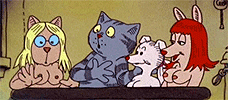
Fritz the Cat
1972 -
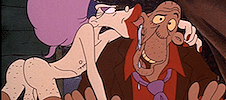
Heavy Traffic
1973 -
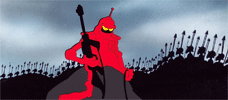
Wizards
1977 -
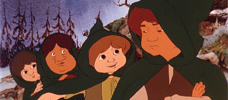
The Lord of the Rings
1978 -
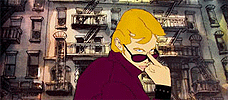
American Pop
1981 -
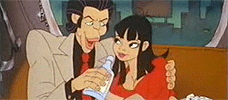
Hey Good Lookin’
1982 -
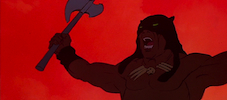
Fire and Ice
1983 -
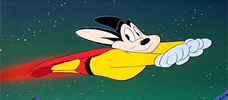
Mighty Mouse: The New Adventures
1987–1988 -
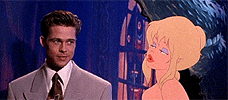
Cool World
1992 -
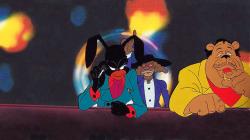
Coonskin
1975
We don’t do comments anymore, but you may contact us here or find us on Twitter or Facebook.



